![]()
![]()
![]()
Use LEFT and RIGHT arrow keys to navigate between flashcards;
Use UP and DOWN arrow keys to flip the card;
H to show hint;
A reads text to speech;
98 Cards in this Set
- Front
- Back
|
15 min
|
Floatation Time
|
|
|
1.2
|
Specific Gravity of Sodium Nitrate, and most parasites
|
|
|
Sodium Nitrate
|
Fecal Floatation
|
|
|
Sheathers or Zinc Sulfate
|
Fecal Centrifugation
|
|
|
1.26
|
Specific Gravity of Sheathers
|
|
|
Whipworms
|
Sheathers is more used for
|
|
|
1.18-1.26
|
Zinc Sulfate Specific Gravity
|
|
|
Zinc Sulfate
|
Great for diagnosing Giardia
|
|
|
Used in fecal smear
|
Saline
Methyline Blue Dye Lugols solution |
|
|
1300 rpm for 5-7 minutes
|
Centrifugation Time
|
|
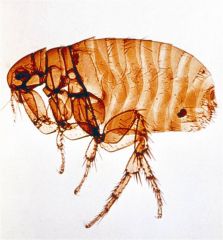
|
Flea
|
|
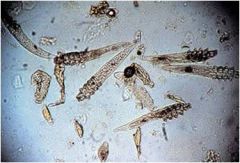
|
Demodex
|
|
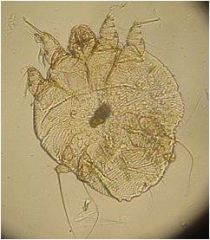
|
Sarcoptes scabei
|
|
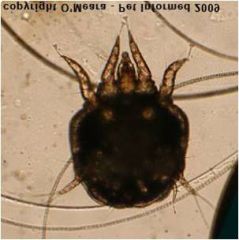
|
Psoroptes ovis
|
|
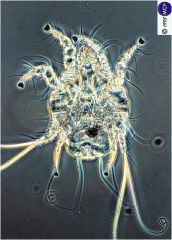
|
Chorioptes spp.
|
|
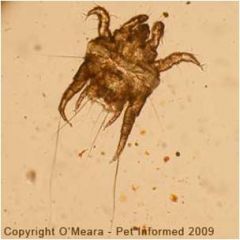
|
Otodectes cynotis
(Ear Mites) |
|
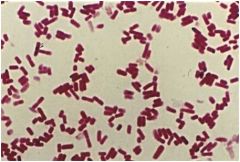
|
Rods
|
|

|
Cocci
|
|
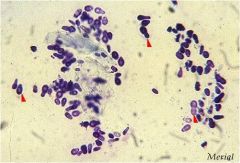
|
Yeast
|
|
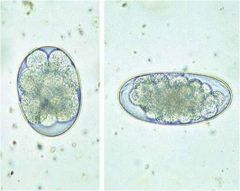
|
Strongylus vulgaris
Strongylus edentates Strongylus equines (Large/Small Strongyle) |
|
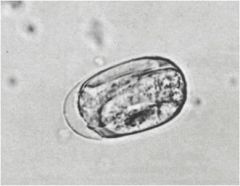
|
Dictyocaulus arnfeldi
(Donkey Lungworm) |
|
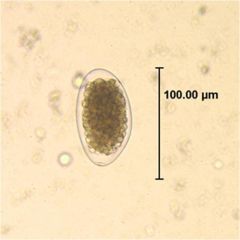
|
Trichostrongylus axei
(Hair worm) |
|
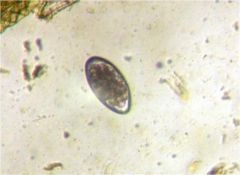
|
Haemonchus contortus
(barberpole worm) |
|
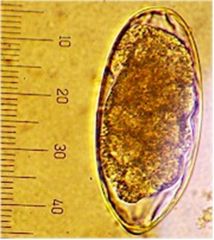
|
Oesophagostomum radiatum
(Nodular worm) |
|
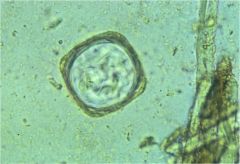
|
Moniezia spp.
|
|
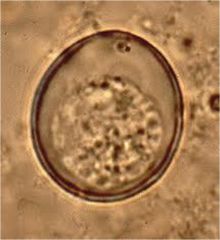
|
Eimeria spp.
|
|
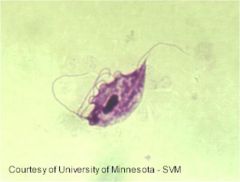
|
Tritrichomonas foetus
|
|
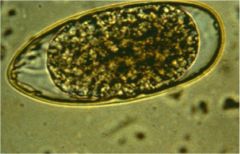
|
Ostertagia ostertagi
|
|

|
Dictyocaulus viviparus
|
|
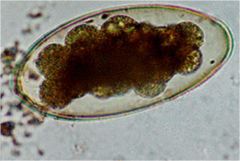
|
Nematodirus spp.
|
|

|
Fasciola hepatica
|
|

|
Cryptosporidium parvum
|
|
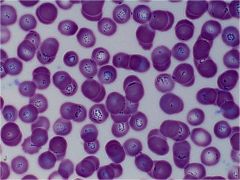
|
Babesia
|
|
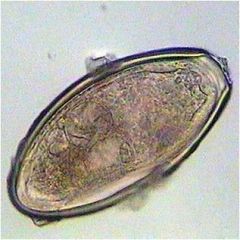
|
Oxyuris equi
(Pinworms) |
|
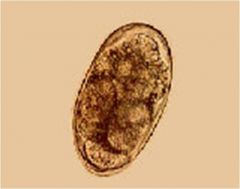
|
Cooperia spp.
|
|
|
Possess a complete digestive tract with openings at both ends
|
Nematodes
|
|
|
Roundworms
|
Nematodes
|
|
|
Helminth
|
Worm
|
|
|
are multicellular eukaryotic invertebrates with tube-like or flattened bodies exhibiting bilateral symmetry
|
Helminth
|
|
|
The fertilized female can lay about 200,000 eggs per day
|
Nematode
|
|
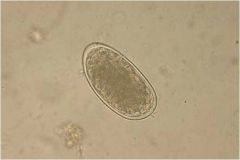
|
Ancylostoma caninum
|
|
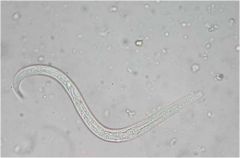
|
Ancylostoma caninum
|
|
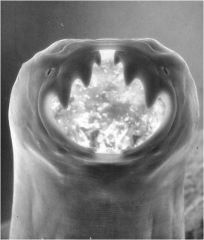
|
Ancylostoma caninum
|
|
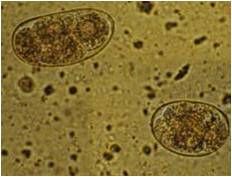
|
Ancylostoma braziliense
|
|

|
Ancylostoma braziliense
|
|
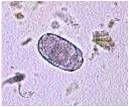
|
Ancylostoma tubaeforme
|
|
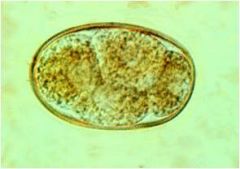
|
Uncinaria stenocephalia
|
|
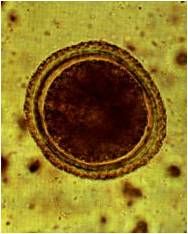
|
Toxocara canis
|
|

|
Toxocara cati
|
|
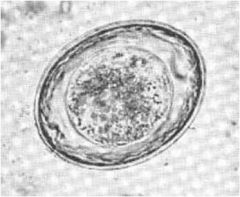
|
Toxascaris leonina
|
|
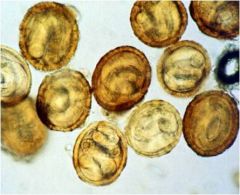
|
Baylisascaris procyonis
|
|
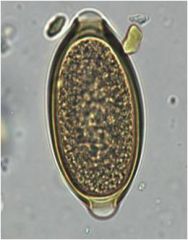
|
Trichuris vulpis
|
|
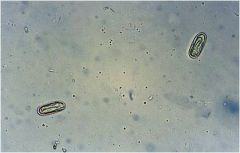
|
Spirocirca lupi
|
|

|
Pearsonema plica
|
|
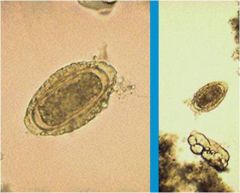
|
Dioctophyma renale
|
|

|
Aleurostrongylus abstrusus
(Lungworm) |
|
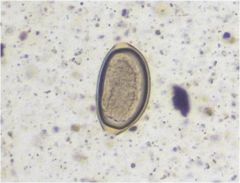
|
Eucoleus aerophilus
|
|
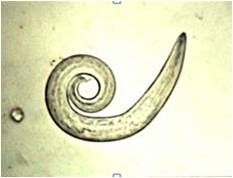
|
Filaroides hirthi
|
|
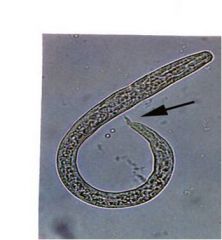
|
Filaroides osleri
|
|
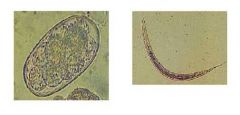
|
Strongyloides ransomi
(Threadworms) |
|
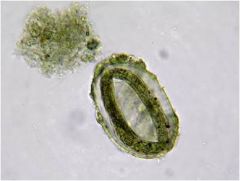
|
Strongyloides stercoralis
|
|
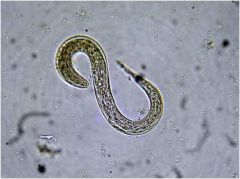
|
Strongyloides stercoralis
|
|
|
Collected from area with several animals
|
Pooled sample
|
|
|
Collected with fecal loop or gloved hand
|
Direct sample
|
|
|
Natural collection of sample
|
Voided samples
|
|
|
Gross examination of feces
|
Color
Blood Consistency Mucus Adult parasites or tapeworm segments |
|
|
24 hrs
|
maximum time limit to run a fecal
|
|
|
possible parasite egg destruction
|
waiting too long to run fecal
|
|
|
possible larval hatch
|
waiting too long to run a fecal
|
|
|
larval degeneration
|
waiting too long to run a fecal
|
|
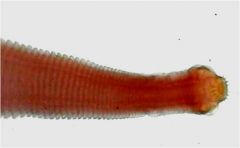
|
Hookworm
(Cestode) |
|
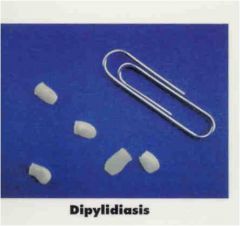
|
Proglottids
|
|
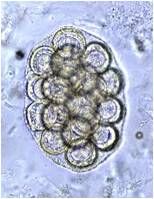
|
Dipylidium caninum
|
|

|
Taenia Taeniformis
|
|
|
Flea
|
Intermediate host of Dipylidium caninum
|
|
|
rodent
|
intermediate host of Taenia taeniaformis
|
|
|
Crush under slide to see eggs
|
Proglottids
|
|
|
Rabbits and hares
|
intermediate host of Taenia psiformis
|
|
|
Sheep and goats
|
intermediate host of taenia ovis
|
|
|
sheep and other ruminants
|
intermediate host of taenia hydatigena
|
|
|
rabbit / subcutaneous tissue
|
Multiceps serialis
|
|
|
sheep, goats; brain, other tissue
|
Multiceps multiceps
|
|
|
Hymenolepis spp
|
Most common cestode infection in humans
|
|
|
only three segments and the smallest cestode
|
Echinoccocus spp.
|
|
|
oval with operculum at one end
|
Trematode eggs
|
|
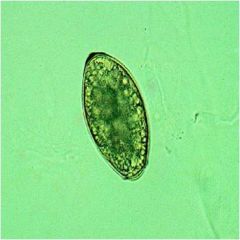
|
Paragonimus kellicotti
(Lung Fluke) |
|
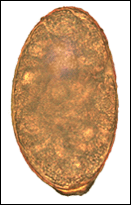
|
Nanophyetus salmincola
(Salmon poisoning) |
|
|
Smallest Fluke
|
Nanophyetus salmincola
(Salmon poisoning) |
|
|
Second immediate host frog or snake
|
Alaria spp.
|
|
|
Lizard poisoning in cats
|
Platynosomum fastosum
|
|

|
Heterobilharzia americanum
(Raccoon and dog blood fluke) |
|
|
Not leaf shaped
|
Heterobilharzia americanum
(Raccoon and dog blood fluke) |
|
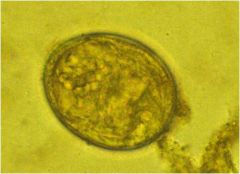
|
Heterobilharzia americanum
(Raccoon and dog blood fluke) |
|
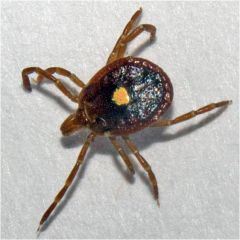
|
Amblyomma americanum
(Lone star tick) |
|
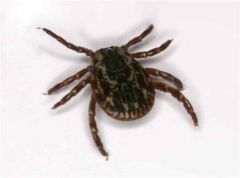
|
Dermacentor variabilis
(American dog tick) |
|
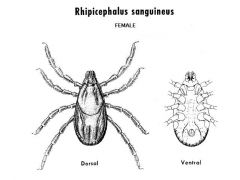
|
Rhipicephalus sanguineus
(Brown dog tick) |
|

|
Giardia
|
|
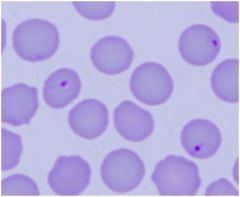
|
Babesia
|

